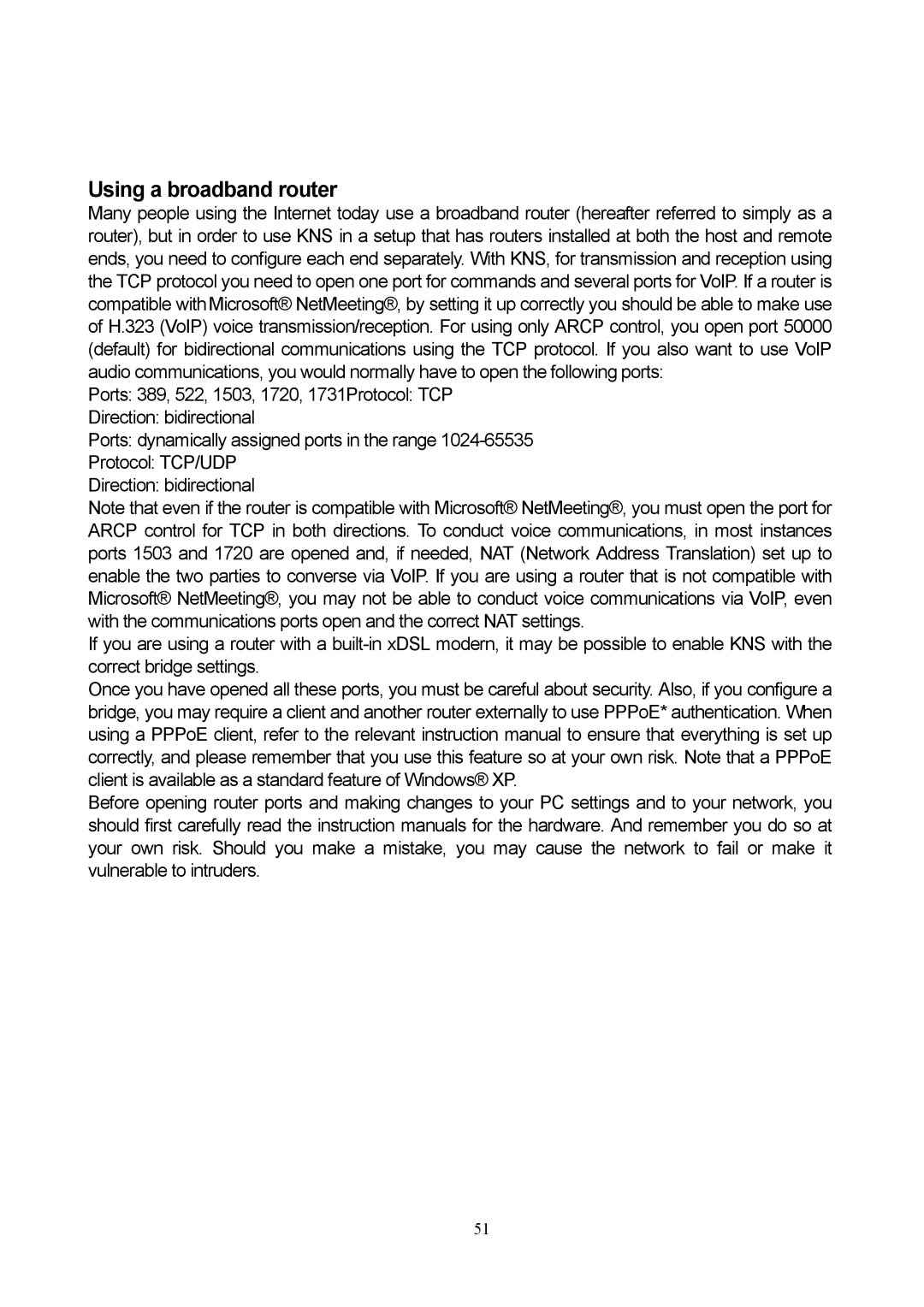Using a broadband router
Many people using the Internet today use a broadband router (hereafter referred to simply as a router), but in order to use KNS in a setup that has routers installed at both the host and remote ends, you need to configure each end separately. With KNS, for transmission and reception using the TCP protocol you need to open one port for commands and several ports for VoIP. If a router is compatible withMicrosoft® NetMeeting®, by setting it up correctly you should be able to make use of H.323 (VoIP) voice transmission/reception. For using only ARCP control, you open port 50000 (default) for bidirectional communications using the TCP protocol. If you also want to use VoIP audio communications, you would normally have to open the following ports:
Ports: 389, 522, 1503, 1720, 1731Protocol: TCP
Direction: bidirectional
Ports: dynamically assigned ports in the range
Protocol: TCP/UDP
Direction: bidirectional
Note that even if the router is compatible with Microsoft® NetMeeting®, you must open the port for ARCP control for TCP in both directions. To conduct voice communications, in most instances ports 1503 and 1720 are opened and, if needed, NAT (Network Address Translation) set up to enable the two parties to converse via VoIP. If you are using a router that is not compatible with Microsoft® NetMeeting®, you may not be able to conduct voice communications via VoIP, even with the communications ports open and the correct NAT settings.
If you are using a router with a
Once you have opened all these ports, you must be careful about security. Also, if you configure a bridge, you may require a client and another router externally to use PPPoE* authentication. When using a PPPoE client, refer to the relevant instruction manual to ensure that everything is set up correctly, and please remember that you use this feature so at your own risk. Note that a PPPoE client is available as a standard feature of Windows® XP.
Before opening router ports and making changes to your PC settings and to your network, you should first carefully read the instruction manuals for the hardware. And remember you do so at your own risk. Should you make a mistake, you may cause the network to fail or make it vulnerable to intruders.
51
